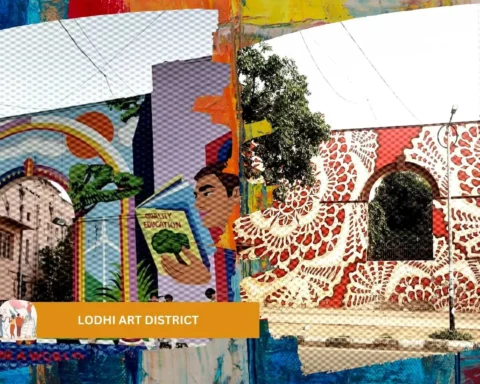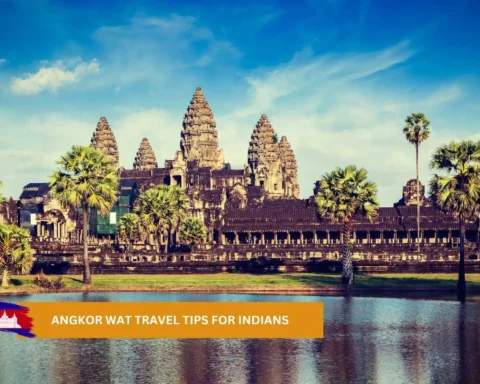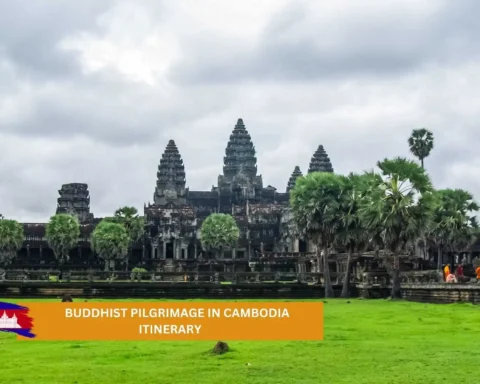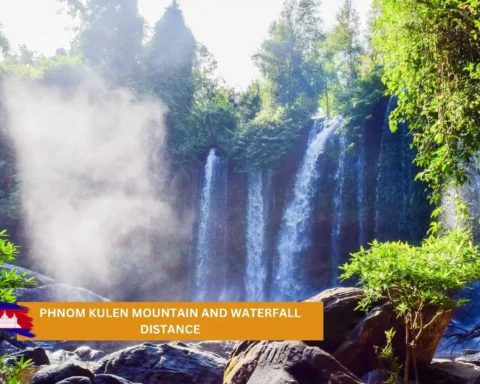Slovenia is a hidden gem that captivates travellers with its diverse landscapes, rich history, and warm hospitality. Slovenia has something for every type of traveller, from picturesque lakes and vibrant cities to medieval castles and pristine caves. As 2024 unfolds, this enchanting country beckons wanderers to explore its best tourist sites. In this guide, we will unveil the must-visit Slovenia tourist sites, provide insights on how to get there and delve into what makes each destination famous.
Table of Contents
Slovenian History and Culture
Slovenian culture has been shaped by its geographic location at the crossroads of Central Europe, the Mediterranean, and the Balkans. Early Slavic settlements in the region laid the foundation for the Slovenian identity. In the Middle Ages, the territory was part of the Holy Roman Empire and later the Habsburg Monarchy, contributing to developing a unique blend of Germanic, Latin, and Slavic elements.
The Reformation in the 16th century played a crucial role, with Protestantism leaving a lasting impact on Slovenian literature and language. However, the Counter-Reformation later brought about a resurgence of Catholicism. During the 19th century, the Slovenian national awakening gained momentum, fueled by a desire for cultural and linguistic preservation. This period saw the emergence of notable literary figures, including France Prešeren, who is celebrated as Slovenia’s greatest poet.
In the aftermath of World War I, the Kingdom of Serbs, Croats, and Slovenes was formed, later renamed the Kingdom of Yugoslavia. The interwar period was marked by efforts to strengthen the Slovenian language and culture. World War II brought occupation and division, leading to the establishment of the Socialist Federal Republic of Yugoslavia after the war. Under communist rule, efforts were made to promote Yugoslav unity while maintaining distinct regional identities.
The late 20th century witnessed significant political and social changes. Slovenia declared independence in 1991, marking the end of Yugoslavia. The newfound independence allowed Slovenian culture to flourish, embracing a renaissance of literature, arts, and music. The country’s entry into the European Union in 2004 further facilitated cultural exchange and collaboration.
Today, Slovenian culture reflects a harmonious blend of tradition and modernity. The nation takes pride in its rich folk traditions, vibrant festivals, and a flourishing contemporary art scene. The Slovenian language, with its distinct dialects, symbolises national identity. From the medieval architecture of Ljubljana to the folk music and dances of the regions, Slovenian culture continues to evolve, embracing its heritage while embracing the global influences of the 21st century.
Tourism Industry
Slovenia’s tourism industry has experienced significant growth and acclaim in recent years, attracting travellers with its diverse attractions and natural beauty. The country’s compact size allows visitors to explore a rich tapestry of landscapes, from the emerald waters of Lake Bled to the alpine splendour of Triglav National Park. Ljubljana, the capital, charms with its historic architecture and vibrant cultural scene. The tourism sector has benefited from a focus on sustainability, with ecotourism initiatives and a commitment to preserving the pristine environment. Renowned for its warm hospitality, Slovenia offers a range of outdoor activities, cultural experiences, and culinary delights, making it a rising star in European tourism. As the country continues to showcase its unique blend of tradition and modernity, the tourism industry is poised to play a vital role in Slovenia’s economic development.
Slovenian Tourist Sites
Explore the enchanting beauty of Slovenia through a diverse array of tourist sites that captivate with their natural wonders, historical charm, and cultural richness. Discover the magic of these hidden gems as we unveil the must-visit sites that define Slovenia’s unique appeal.
Lake Bled: A Tranquil Oasis
Among the jewels of Slovenia, Lake Bled stands out as an enchanting retreat, a serene oasis surrounded by the Julian Alps. The lake, adorned with an island crowned by the iconic Bled Castle, is a postcard-perfect destination that beckons travellers seeking tranquillity and natural beauty.
Lake Bled is easily accessible from the capital, Ljubljana, which is approximately 55 kilometres away. Travellers can opt for a scenic train ride or a convenient bus journey that takes around 1.5 hours. Alternatively, renting a car provides the flexibility to explore the surrounding areas.
Lake Bled is famous for its emerald-green waters, the Bled Island with its pilgrimage church, and the medieval Bled Castle perched atop a cliff. Visitors can enjoy a traditional pletna boat ride to the island or hike up to the castle for panoramic views of the lake and the surrounding Alps.
Ljubljana: A Capital of Charms
Ljubljana is the charming Slovenian capital city that blends history, culture, and modernity. With its pedestrian-friendly streets, lively cafes, and vibrant arts scene, Ljubljana invites travellers to immerse themselves in its unique atmosphere.
Ljubljana is well-connected by air, with the Jože Plečnik Airport serving as the main gateway. A quick shuttle or taxi ride from the airport brings visitors to the city centre. Additionally, efficient train and bus networks link Ljubljana to neighbouring European cities.
The capital is a popular destination for its charming Old Town, dominated by the Ljubljana Castle overlooking the city. The Triple Bridge, Franciscan Church, Preseren Square, and the Dragon Bridge are iconic landmarks. Ljubljana also boasts a vibrant culinary scene, with riverside cafes and local markets offering a taste of Slovenian gastronomy.
Škocjan Caves: Nature’s Subterranean Masterpiece
For those seeking a unique underground adventure, the Škocjan Caves are a testament to the awe-inspiring beauty of nature. Designated as a UNESCO World Heritage site, these caves offer a mesmerising journey through subterranean chambers, canyons, and majestic stalactite formations.
This Slovenian destination is conveniently located near the town of Divača, around 50 kilometres from Ljubljana. Travelers can reach the caves by car or take a train to Divača and then a local bus to the site. Guided tours are available for a comprehensive exploration of the caves.
These deep caves are famous for their immense chambers, most notably the Martel Chamber, which is among the largest underground chambers in the world. The Reka River flows through the mountain caves, creating a dramatic underground landscape. These spectacular caves are a haven for speleologists and nature enthusiasts.
Piran: Seaside Splendor
Perched on the Slovenian coast, Piran is a coastal gem that exudes old-world charm. With its narrow winding streets, historic architecture, and stunning sea views, Piran transports visitors to a bygone era of maritime history.
Piran, the coastal town, is accessible by bus from Ljubljana, providing a scenic journey through the Slovenian countryside. Alternatively, those with a rental car can enjoy a picturesque drive along the coast. The nearest international airport is in Trieste, Italy, with shuttle services connecting to Piran.
On the Adriatic coast, Piran is the most beautiful town famous for its well-preserved historical monuments, including the Tartini Square and St. George’s Church. The town’s Venetian influence is evident in its layout and buildings. Škofja Loka is also the oldest town, just like Piran. Visitors can also savour fresh seafood at local restaurants while enjoying panoramic views of the Adriatic Sea.
Triglav National Park: Alpine Wilderness
Nature enthusiasts and adventure seekers find their haven in Triglav National Park, a pristine wilderness dominated by the majestic peaks of the Julian Alps. The park is a playground for outdoor activities, offering hiking trails, alpine lakes, and breathtaking vistas.
Triglav National Park is easily accessible by car from Bled or Ljubljana. The park’s diverse landscapes can be explored by following well-marked hiking trails on a day trip or engaging in popular activities such as kayaking on Lake Bohinj.
Triglav National Park is famous for Mount Triglav, Slovenia’s highest peak, and the stunning Lake Bohinj. The park is a haven for hikers, climbers, and nature photographers, with its diverse flora and fauna. The emerald-green Savica Waterfall is another natural marvel within the park.
Postojna Cave and Predjama Castle: A Dual Delight
This dual delight combines the allure of underground wonders with the intrigue of a medieval fortress. Postojna Cave is easily reached from Ljubljana by train or bus, and a short bus ride connects visitors to Predjama Castle. Those with a rental car can conveniently explore both attractions in a single day.
Postojna Cave is famous for its surreal underground landscapes, adorned with stalactites and stalagmites. Visitors can embark on a train ride through the cave’s vast chambers. Predjama Castle, built in the 13th century into the mouth of a cave, is famous for its dramatic location and medieval architecture.
Maribor: Wine Capital of Slovenia
Nestled in the heart of the wine-growing region, Maribor is a charming city that beckons wine enthusiasts and history lovers alike. With its medieval Old Town, vibrant cultural scene, and scenic vineyards, Maribor offers a delightful blend of tradition and modernity.
Maribor is the wine region that can be reached by train or bus from Ljubljana, offering a scenic journey through the Slovenian countryside. The city is also well-connected by road, and those with a penchant for driving can explore the surrounding wine country at their own pace.
Maribor is famous for its wine, and visitors can indulge in wine tastings at local vineyards. The city’s Old Vine, a symbol of the rich winemaking tradition, is recognised by the Guinness World Records as the world’s oldest grapevine. The city’s historical landmarks are the Maribor Cathedral, the Town Hall, and the picturesque Lent District.
Lake Bohinj: A Natural Paradise
Lake Bohinj is a spectacular view and unspoiled natural paradise tucked away in the Triglav National Park. Surrounded by towering peaks and dense forests, the lake offers a tranquil retreat for those seeking a peaceful escape.
Bohinj Lake is the largest lake, easily accessible by car from Bled or Ljubljana. The scenic drive through the Julian Alps provides breathtaking views. Additionally, buses connect the lake to Bled and Ljubljana for those opting for public transportation.
Lake Bohinj has a unique feature: its crystal-clear waters reflect the surrounding peaks. The lake is a haven for water activities such as kayaking and fishing. Savica Waterfall, where the Sava Bohinjka River begins its journey, adds to the area’s natural beauty.
Ptuj: Oldest Town in Slovenia
Step back in time as you explore Ptuj, the oldest town in Slovenia, where history comes to life through its well-preserved architecture, ancient castle, and charming cobblestone streets.
Ptuj is accessible by train or bus from Ljubljana, offering a comfortable journey through the picturesque Slovenian countryside. The town is also conveniently located near Maribor, allowing visitors to combine the two historic destinations.
Ptuj is famous for its medieval architecture, with highlights including Ptuj Castle and the Town Tower. The town hosts the annual Kurentovanje festival, a vibrant and colourful celebration of Slovenian folklore. The Orpheus Monument, a well-preserved Roman relic, adds to Ptuj’s historical significance.
Velika Planina: Alpine Pastures and Traditions
For a taste of traditional Slovenian mountain life, Velika Planina is a unique destination featuring alpine pastures, mountain ranges, pine forests, rustic huts, and a connection to the country’s rich cultural heritage.
Velika Planina is accessible by car from Ljubljana, with a scenic drive through the Kamnik Alps. Alternatively, public buses run from Ljubljana to Kamnik, where a cable car and chairlift take visitors to Velika Planina.
Velika Planina is famous for its shepherds’ huts, known as “koče,” which dot the alpine landscape. The traditional architecture and pastoral scenery glimpse Slovenia’s rural traditions. The area is a popular hiking destination, with plenty of opportunities offering stunning views of the surrounding mountains is a destination for freedom lovers.
Koper: Coastal Elegance
As one of Slovenia’s coastal gems, Koper enchants visitors with its historic charm, Venetian architecture, and lively atmosphere along the Adriatic Sea.
Koper is easily accessible by bus from Ljubljana or car, with a scenic drive along the coast. The city’s port is a hub for cruise ships, welcoming travellers from various parts of the Mediterranean.
Koper is famous for its well-preserved medieval Old Town, featuring landmarks such as the Praetorian Palace and the Cathedral of the Assumption. The city’s main square, Titov trg, is a hub of plenty of activities, surrounded by cafes and shops. The nearby Škocjanski Zatok Nature Reserve offers a peaceful escape for nature lovers and a destination for couples.
Idrija: A Town of Mercury
Idrija, a town with a rich mining history, invites visitors to explore its unique heritage, from the world’s second-largest mercury mine to lace-making traditions that have earned UNESCO recognition.
Idrija is accessible by bus from Ljubljana, providing a comfortable journey through the Slovenian countryside. The town is also conveniently located for those exploring the western part of Slovenia.
Idrija is famous for Anthony’s Shaft, a part of the Idrija Mercury Mine, which offers an underground tour showcasing the mining history. The town is also renowned for its lace-making tradition, with the Idrija Lace Gallery providing insights into this delicate craft. Gewerkenegg Castle, overlooking the town, adds to Idrija’s historical charm.
Logar Valley: Alpine Paradise
Logar Valley, nestled in the Kamnik-Savinja Alps, is a pristine alpine valley captivated by its meadows, forests, and the towering peaks surrounding it.
Logar Valley is accessible by car from Ljubljana, with a scenic drive through the Solčava Panoramic Road. Public transportation options include buses to Solčava, where visitors can arrange local transportation to the valley.
Logar Valley is famous for its natural beauty, with Rinka Waterfall being a prominent attraction. The valley offers numerous hiking trails for various skill levels, allowing visitors to immerse themselves in the tranquillity of the Alpine landscape. Traditional lush forests and alpine farms, known as “planšarije,” provide an authentic experience of mountain life.
Vintgar Gorge: A Nature’s Masterpiece
Nature’s artistry is fully displayed at Vintgar Gorge, where a wooden walkway guides visitors through the stunning canyon, passing waterfalls and emerald-green pools.
Vintgar Gorge is a beautiful gorge easily accessible by car from Bled, with a short drive through the picturesque Slovenian countryside. Public transportation options include buses to Bled, where visitors can arrange local transportation to the gorge.
Vintgar Gorge is famous for its natural beauty, with the Radovna River carving a path through the limestone canyon. The gorge is home to the 13-meter-high Šum Waterfall and the scenic Bohinj Railway Bridge. The wooden walkways provide a unique perspective of the stunning surroundings.
Bovec and Kranjska Gora: Alpine Gateway to Adventure and Serenity
Bovec, nestled in the Julian Alps, is accessible by car from major cities such as Ljubljana, providing a scenic drive through Slovenia’s picturesque landscapes. Alternatively, public buses connect Bovec with other towns, and shuttle services may be available. For those arriving internationally, the nearest airports are in Ljubljana and Trieste, Italy, with additional transfer options to Bovec.
Bovec is renowned for its stunning location amidst the Julian Alps and its proximity to the Soča River, famed for its crystal-clear turquoise waters. Adventure enthusiasts flock to Bovec for thrilling rafting experiences on the Soča River and exploration of the surrounding alpine trails. The town’s charm lies in its alpine ambience, offering a base for outdoor activities like hiking, kayaking, and canyoning, all set against the breathtaking backdrop of the Julian Alps.
Additionally, Bovec is a gateway to the Triglav National Park, providing access to even more of Slovenia’s natural wonders. Nestled in the Julian Alps, Lake Jasna is a serene alpine jewel near Kranjska Gora, known for its crystal-clear waters reflecting the surrounding peaks. Its tranquil ambience and scenic beauty make it a popular spot for leisurely walks and a peaceful escape in the heart of nature.
Boka Waterfalls is a huge waterfall near Bovec in the Julian Alps; these cascading falls add a touch of natural splendour to your itinerary, enhancing the alpine charm and outdoor adventure in this picturesque region.
Air Museums
Embark on a captivating journey through Slovenia’s history by exploring its diverse open-air museums. In the charming town of Rogatec, the Rogatec Open-Air Museum spans 12 hectares, offering a nostalgic glimpse into rural life with its collection of traditional farmhouses, a blacksmith’s workshop, and lively demonstrations of age-old crafts. Moving to the picturesque Logar Valley, the Oplen House Open-Air Museum invites visitors to witness alpine traditions within a 300-year-old farmhouse, blending cultural exploration with the stunning natural beauty of the surroundings. Meanwhile, in the heart of the Dolenjska region, the expansive Dolenjska Open-Air Museum sprawls over 20 hectares, showcasing the diverse heritage of Slovenia through a collection of traditional buildings, crafts, and regional customs. Each living museum provides an immersive experience, allowing travellers to step back in time and gain a profound understanding of Slovenia’s rich cultural tapestry.
Conclusion
In conclusion, Slovenia’s tourist sites offer a captivating journey through a diverse landscape of natural wonders, historical treasures, and cultural gems. Together, these sites invite travellers to explore the hidden treasures of this European gem, where tradition meets modernity against a backdrop of breathtaking landscapes.
FAQs
Is Slovenia a cheap destination?
Slovenia packs Alpine charm and historic cityscapes at surprisingly affordable prices. Expect cosy cafes, stunning hikes, and medieval castles without breaking the bank. ️
Is Tito Square close to Lake Bled?
Nope, quite a distance! Tito Square is in Ljubljana, Slovenia’s capital, while Lake Bled sits nestled in the Julian Alps, about 60 km northwest. You’d need a scenic train ride or drive to get between them.
In how many days can you plan a trip to Slovenia?
For a concise overview of key destinations like Lake Bled and Ljubljana, 3-4 days can suffice. However, to delve into Slovenia’s diverse landscapes and cultural treasures, consider a 7-10 day journey, allowing time for exploration and immersion.
Where is the Vrsic Pas?
Winding through the majestic Julian Alps of northwest Slovenia, the Vrsic Pass conquers a heart-stopping 1,611 meters, connecting Kranjska Gora with the Soča Valley. ️










My brother recommended I might like this website. He was entirely right.
This post truly made my day. You can not imagine just how much time
I had spent for this info! Thanks!
[…] is a key tourist destination in southeastern Africa, with top attractions including Lake Malawi, Mulanje Mountain, […]